Boys spot strange bone — and find two ancient elephant skeletons in Germany. See them
A grandfather’s love of paleontology fueled a museum in Germany. His son’s passion grew the museum. And his grandsons’ keen eyes led to the discovery of two ancient elephant skeletons.
Peter Kapustin regularly takes his two sons, 9-year-old Constantin and 10-year-old Alexander, fossil hunting in a gravel pit in Erding, Germany. The skull of an ancient elephant had been found in the pit in 2004, but in recent years, Kapustin’s searches hadn’t found much.
Even still, the boys wanted to go fossil hunting in the pit last April, so Kapustin took them.
On their way to the gravel pit, the boys spotted a strange hand-sized bone sticking out of the ground near an animal burrow, according to a news release from the Urzeitmuseum – Sammlung Kapustin shared with McClatchy News on April 17.
Kapustin, a self-taught paleontologist and curator of the museum, immediately recognized the strange bone as part of a rib.
The trio looked in the animal burrow and found another much-larger bone, the museum said.
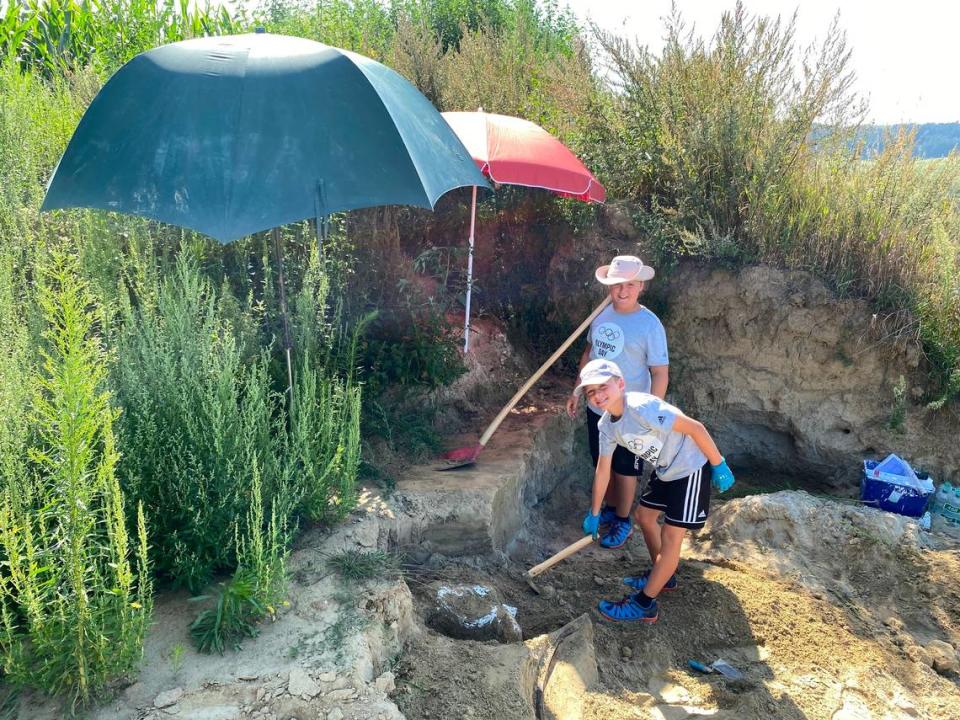
A large-scale excavation of the area quickly followed. Photos show this tedious and difficult process.
The year-long project uncovered about 120 massive bones from two remarkably complete ancient elephant skeletons, the museum said.
The ancient elephants lived about 10 million years ago and likely belong to the extinct species Deinotherium giganteum, named for its massive size, officials said. The skeletons were nicknamed “Big Alex” and “Little Consti” after the brothers.
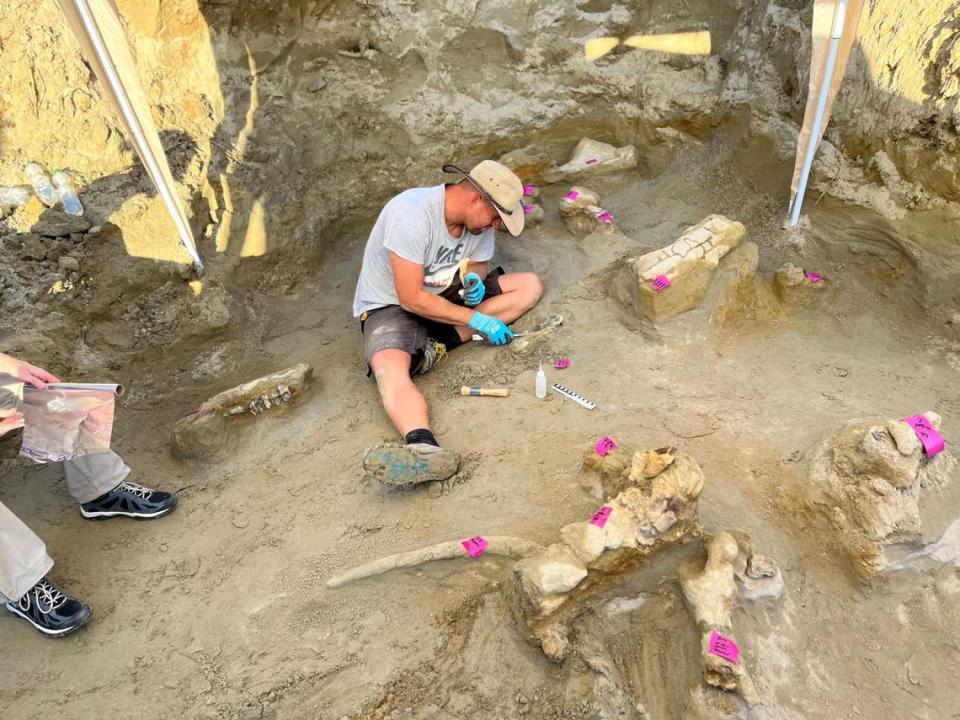
The larger elephant, Big Alex, was over 13 feet tall at shoulder height and not fully grown when it died, the museum said. The animal’s skeleton included the skull found in the pit in 2004.
The smaller elephant, Little Consti, was younger when it died but already reached 10 feet tall at the shoulder. Its skeleton was better preserved.
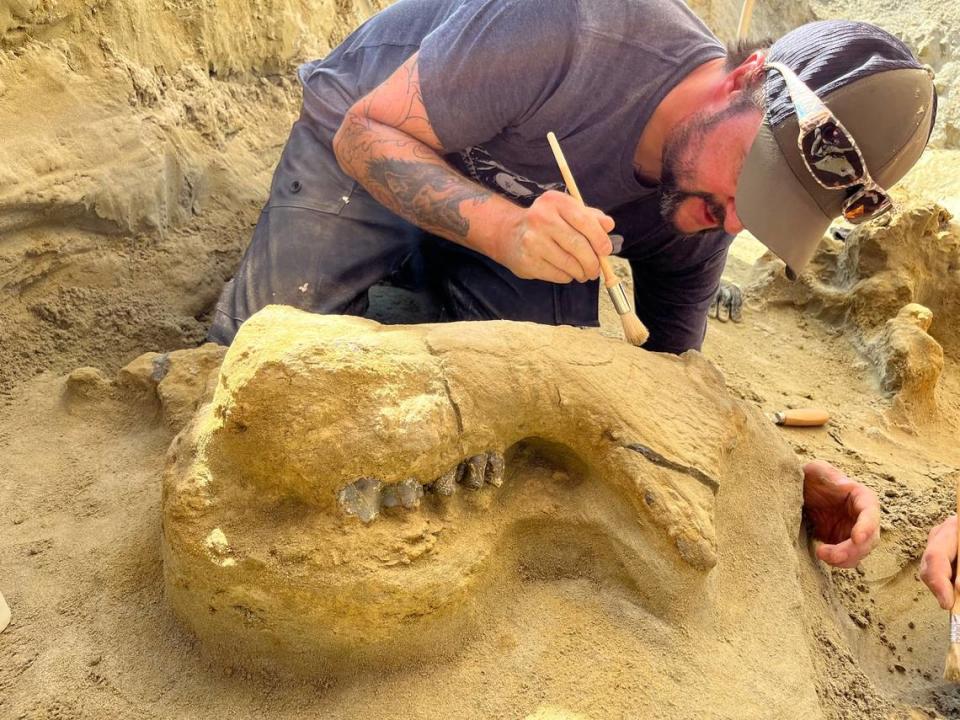
When full grown, Deinotherium giganteum elephants could reach up to 16 feet in height at their shoulders, the museum said. The species went extinct about a million years ago and is known from partial skeletons found in Europe, Asia and Africa.
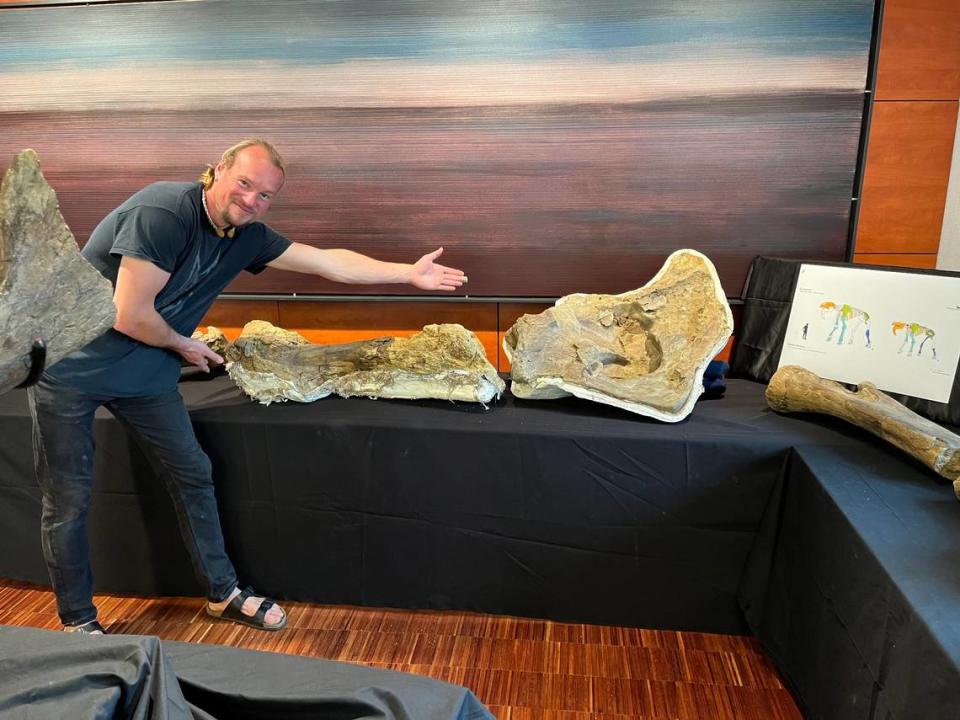
The museum described the recent finds as sensational and extraordinary because of the rarity of finding two nearly complete elephant skeletons in one place.
The excavation also found the bones and teeth of a large cat, possibly a saber-toothed tiger; an antelope; a rhinoceros; and another skull that may belong to a third prehistoric elephant.
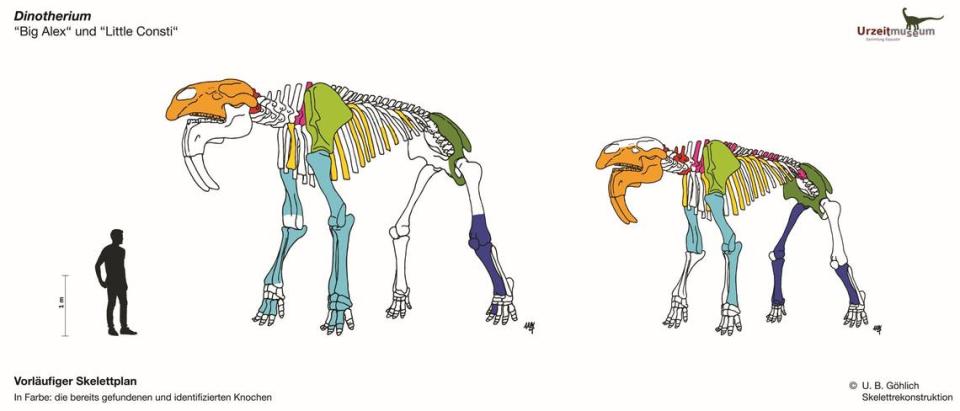
The bones will be dissected and analyzed, a process that will likely take a year, before being put on display in the Urzeitmuseum – Sammlung Kapustin in Erding. The museum began with the collection of Kapustin’s father and later developed into a volunteer-run gallery dedicated to prehistory.
Erding is a town in southern Germany, a roughly 370-mile drive southwest from Berlin.
Google Translate was used to translate the news release from Urzeitmuseum – Sammlung Kapustin.
‘Gigantic’ bones stumped experts for centuries. Now, prehistoric mystery is solved
High school student cracks open rock during class — and discovers new species in Japan
Carvings discovered on rock walls in Brazil — then something prehistoric is revealed

